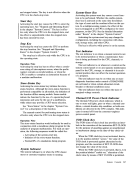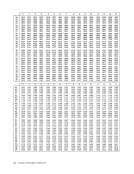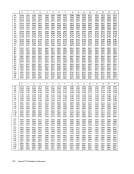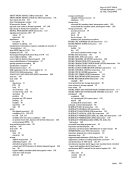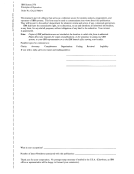Condition SIO or SIOF=I Subchannel available DE or attention in device B,eI
Device working, CUavailable B
CU end orchannel end in CU:
for the addressed device B,eI
for another device B,SM
CU working B,SMInterruption pending in subchannel for the
addressed device because of:
chaining terminated by busy condition
other type of terminationSubchannel working
CUavailable CU working Explanation: B Busy bit appears in CSW. cl Interruption condition cleared; status appears in CSW.
CUControl unit.
DE Device end.
SM Status-modifier bit appears in CSW.
CSW not stored, orI/O interruption cannot occur.
Busy bit is off.
CSW Status Stored ByTIO CLRIO+ HIO or HDV I/O Interrupt #
-,eI-,cl B
-,eI -,eI
B,SM -,eI
B,SM B,SM
B,eI -,eI B,eI
-,eI -,eI-,cl B,SM =I When a channel executes START I/O FAST RELEASE as START I/O, the CSW status
stored for the two instructions isidentical. When START I/O FAST RELEASE is
executedindependently of the device, the same status is stored by an I/O interruption
with the CSWalso indicating deferred condition code 1.
# Except when theI/O interruption is caused by a deferred condition code 1 for
STARTI/O FAST RELEASE.
+ The entries in thiscolumn apply only when the CLRIO function is executed. When
CLEARI/O is executed as{ TEST I/O, the entries in the TIO column apply. Indications of Busy in CSW Channel End
Channel end is caused by the completion of the por
tion of anI/O operation involving transfer of data
or control information between theI/O device and
the channel. The condition indicates that the sub
channel has become available for use for another
operation.
EachI/O operation causes a channel-end condi
tion to be generated, and there is only one Channel
End for an operation. The channel-end condition is
not generated when programming errors or equip
ment malfunctions are detected during initiation of
the operation. When command chaining takes place,
only the channel end of the last operation of the
chain is made available to the program. The channel
end condition is not made available to the program
when a chain of commands is prematurely concluded
because of an unusual condition indicated with con
trol unit end or device end or during the initiation of
a chained command.
The instant within anI/O operation when chan
nel end is generated depends on the operation and
the type of device. For operations such as writing on
magnetic tape, the channel-end condition occurs
when the block has been written.On devices that
verify the writing, channel end mayor may not be
delayed until verification is performed, depending on
the device. When magnetic tape is being read, the
channel-end condition occurs when the gap on tape
reaches the read-write head.On devices equipped
with buffers, such as the IBM 3211 Printer Model 1,
the channel-end condition occurs upon completion
of data transfer between the channel and the buffer.
During control operations, channel end is generated
when the control information has been transferred to
the devices, although for short operations the condi
tion may be delayed until completion of the opera
tion. Operations that do not cause any data to be
transferred can provide the channel-end condition
during the initiation sequence.
A channel-end condition pending in the control
unit causes the control unit to appear busy for initia
tion of new operations.
Channel end is presented in combination with
status modifier and unit check to initiate the com
mand retry procedure.Input/Output Operations 231
Device working, CU
CU end or
for the addressed device B,eI
for another device B,SM
CU working B,SM
addressed device because of:
chaining terminated by busy condition
other type of termination
CU
CU
DE Device end.
SM Status-modifier bit appears in CSW.
CSW not stored, or
Busy bit is off.
CSW Status Stored By
-,eI
-,eI -,eI
B,SM -,eI
B,SM B,SM
B,eI -,eI B,eI
-,eI -,eI
stored for the two instructions is
executed
with the CSW
# Except when the
START
+ The entries in this
CLEAR
Channel end is caused by the completion of the por
tion of an
or control information between the
the channel. The condition indicates that the sub
channel has become available for use for another
operation.
Each
tion to be generated, and there is only one Channel
End for an operation. The channel-end condition is
not generated when programming errors or equip
ment malfunctions are detected during initiation of
the operation. When command chaining takes place,
only the channel end of the last operation of the
chain is made available to the program. The channel
end condition is not made available to the program
when a chain of commands is prematurely concluded
because of an unusual condition indicated with con
trol unit end or device end or during the initiation of
a chained command.
The instant within an
nel end is generated depends on the operation and
the type of device. For operations such as writing on
magnetic tape, the channel-end condition occurs
when the block has been written.
verify the writing, channel end mayor may not be
delayed until verification is performed, depending on
the device. When magnetic tape is being read, the
channel-end condition occurs when the gap on tape
reaches the read-write head.
with buffers, such as the IBM 3211 Printer Model 1,
the channel-end condition occurs upon completion
of data transfer between the channel and the buffer.
During control operations, channel end is generated
when the control information has been transferred to
the devices, although for short operations the condi
tion may be delayed until completion of the opera
tion. Operations that do not cause any data to be
transferred can provide the channel-end condition
during the initiation sequence.
A channel-end condition pending in the control
unit causes the control unit to appear busy for initia
tion of new operations.
Channel end is presented in combination with
status modifier and unit check to initiate the com
mand retry procedure.
























































































































































































































































